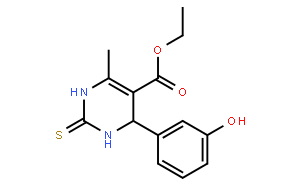| In vitro |
Monastrol does not inhibit progression through S and G2 phases of the cell cycle or centrosome duplication. The mitotic arrest due to monastrol is also rapidly reversible. Monastrol also inhibits bipolar spindle formation in Xenopus egg extracts. Monastrol arrests cells in mitosis with monoastral spindles comprised of a radial array of microtubules surrounded by a ring of chromosomes while it does not affect microtubules in interphase cells or microtubule polymerization in vitro[1]. Exposure of cultured sympathetic neurons to monastrol for a few hours increases both the number and the growth rate of the axons. With additional time, the overall lengths of the axons are indistinguishable from controls. Sensory neurons shows a similar short-term increase in axonal growth rate. However, prolonged exposure results in shorter axons, suggesting that sensory neurons may be more sensitive to toxic effects of the drug. Nevertheless, the overall health of the cultures is still far more robust than cultures treated with taxol, a drug commonly used for anti-cancer therapy[2]. In HeLa cells, monastrol activates the spindle checkpoint, leading to mitotic arrest and apoptosis[3].
|

 COA
COA MSDS
MSDS HPLC
HPLC NMR
NMR